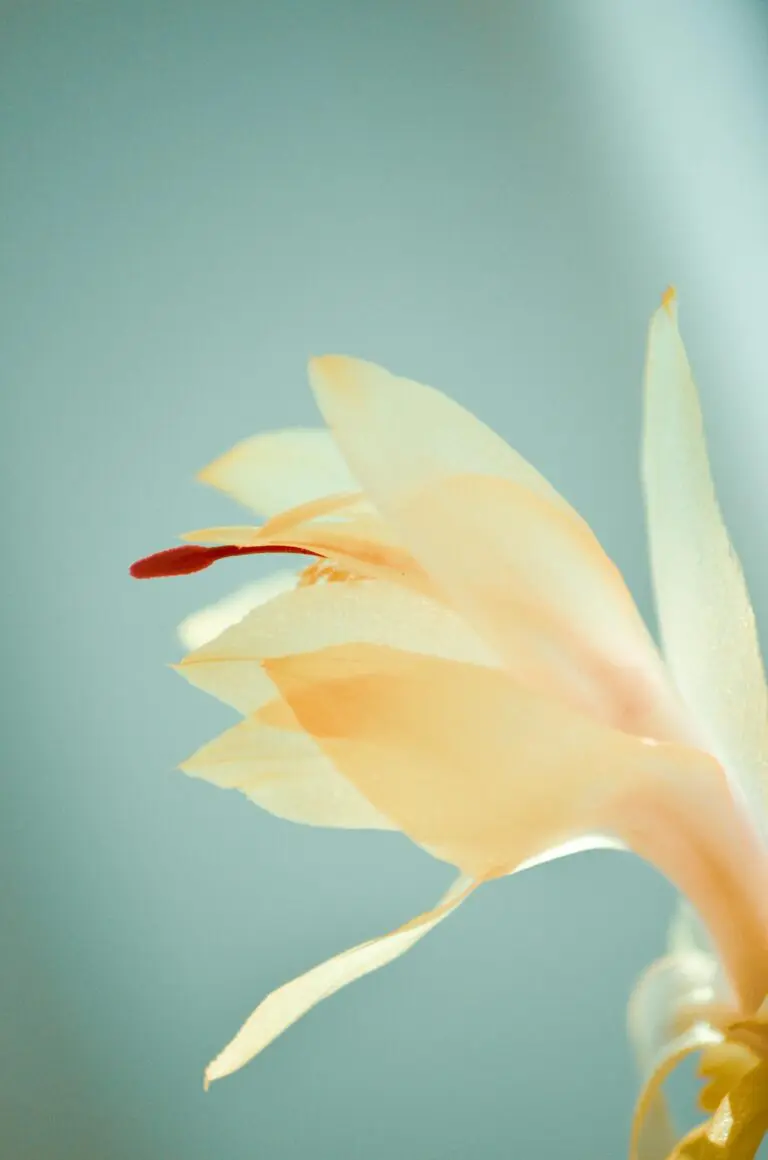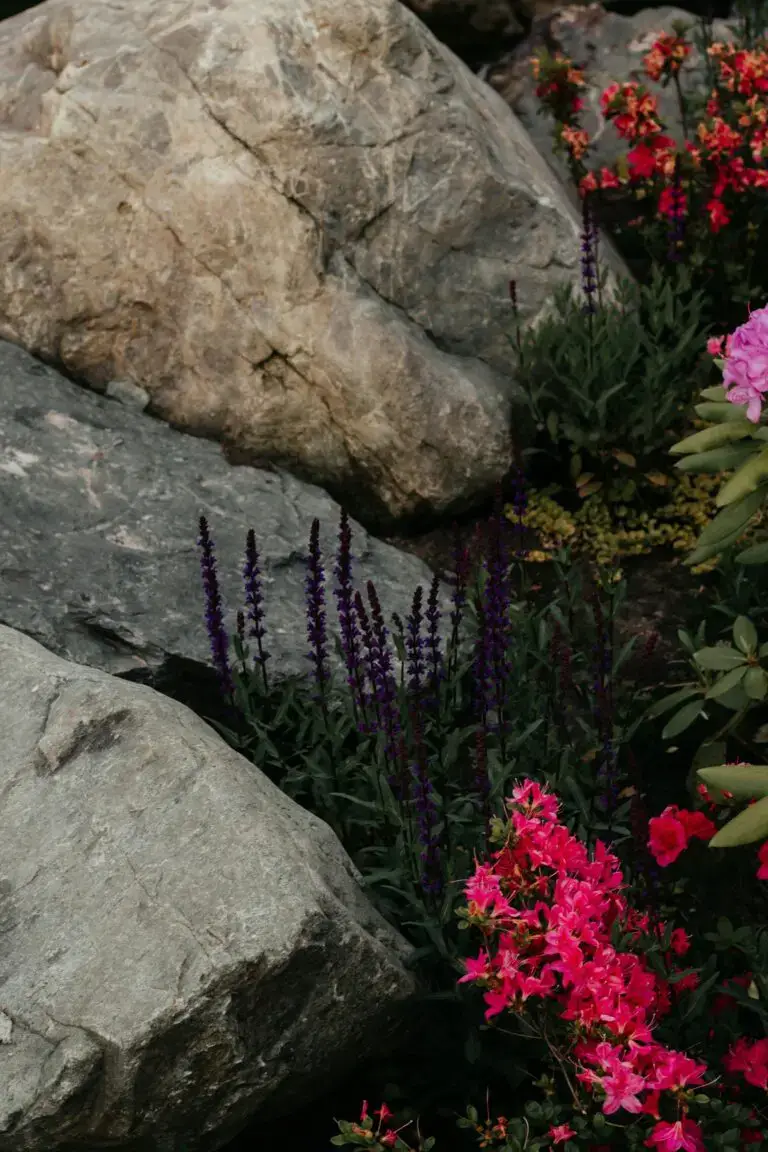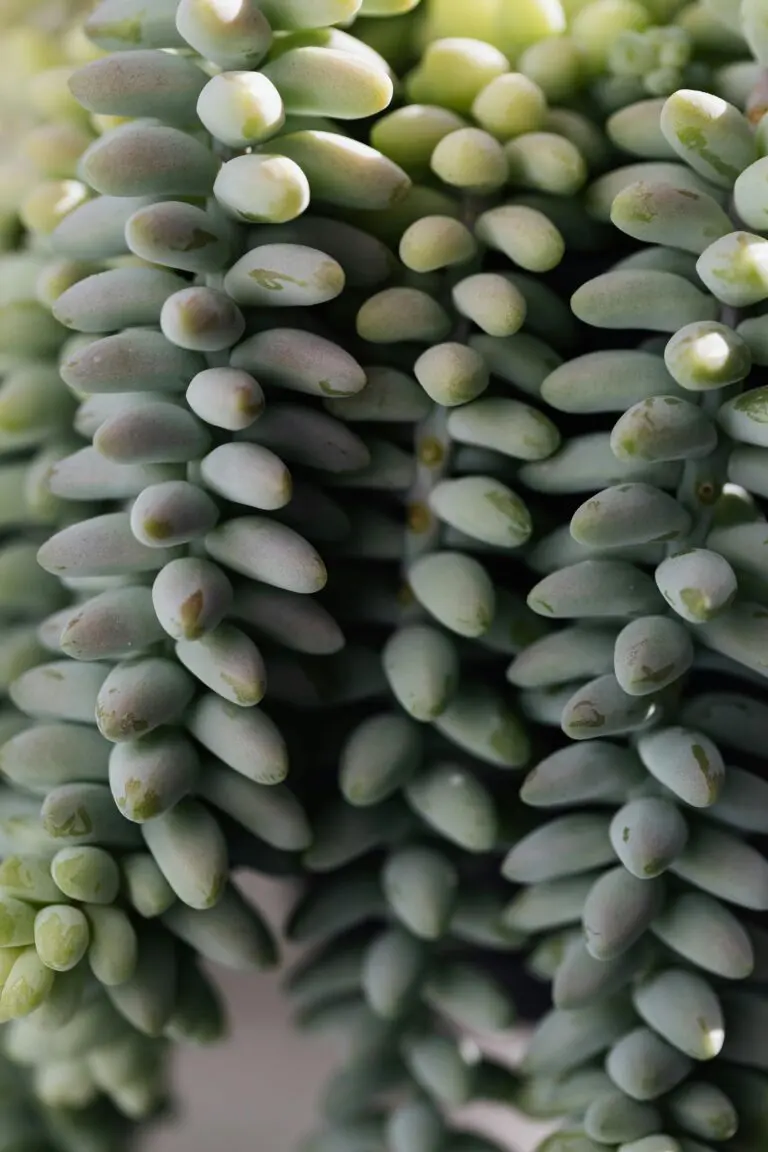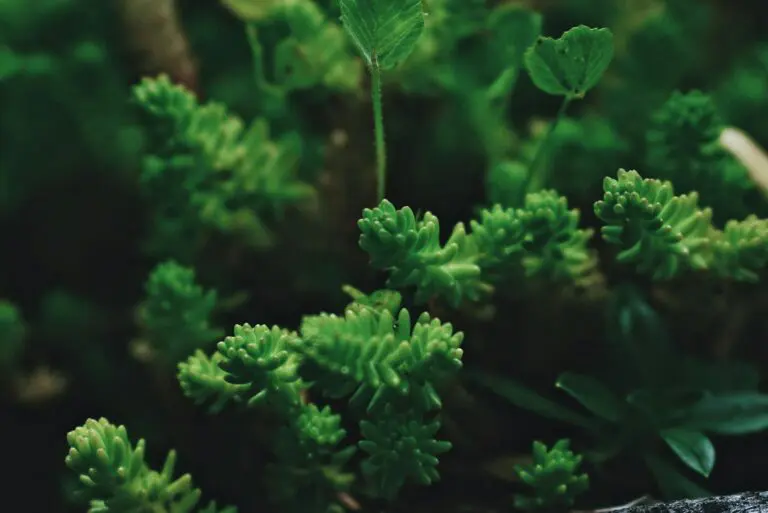Introduction to Sedums
Imagine a plant so resilient that it springs to life in rocky outposts and thrives in parched deserts. Enter the diverse world of sedums, the hardy succulents that remarkably adapt to various landscapes. This vast plant family enchants gardeners and plant enthusiasts alike with its ability to prosper in settings from sun-bathed terraces to the challenging contours of an alpine rock garden.

Each sedum species brings a unique charm to the botanical tapestry, boasting an array of forms, colors, and growth habits that can enliven any garden space. In the urban jungle, sedums sprout from green roofs, bringing a touch of wilderness to the concrete expanse. In coastal retreats, they festoon the dunes, their succulent leaves glistening like dew-kissed emeralds under the sun’s gaze.
However, the sedum’s versatility doesn’t end at the border of wild landscapes. Home gardens are prime real estate for these sturdy plants, where sedums serve as low-maintenance groundcovers or vibrant additions to container displays. As we leaf through the pages of our expert gardening tips, we uncover the simple joys of nurturing these rugged beauties to their fullest potential.
Whether planted en masse or as solitary showpieces, sedums are a testament to the enduring beauty and adaptability of nature. Their ability to flourish across a surprising range of climates and garden scenarios makes them a fascinating subject for any green-thumbed explorer. So let’s delve deeper into the lush world of sedums and discover how easily they can transform your garden into a vibrant sanctuary.
Natural Habitats of Sedum
Picture this: a rocky outcrop where it seems nothing could possibly grow. Yet, there you find them—sedums, the rugged survivors of the plant world. These hardy succulents aren’t just surviving; they’re downright flourishing in the most unexpected of places. What’s their secret to thriving in environments as tough as nails?
These resilient plants have carved out a niche for themselves in some of the most inhospitable places. From the crevices of jagged cliffs where they bask in the full glare of the sun, to arid, sandy soils where they revel in the dry spell. Sedums are the ultimate adaptors, their thick, fleshy leaves storing precious water to see them through droughts that would defeat less savvy plants. It’s as if they’ve got a built-in survival kit for the dry, the rocky, and the sun-scorched terrains of our planet.
But don’t let their love for tough spots fool you; sedums are also party-goers in lusher climes. You’ll find them at forest edges, breaking out of the woodlands into the sunlight, and even on green roof installations, where they’re leading the eco-friendly charge towards sustainable living. These succulents have a talent for popping up in the most unexpected urban spaces, turning gray into green and proving that nature can take root just about anywhere. For garden enthusiasts looking to bring these versatile beauties into their lives, uncovering ideal planting spots for vibrant sedum growth is key to creating your very own sedum sanctuary.
Real-life examples of their adaptability are everywhere. From the majestic sedum-topped cliffs along coastal regions, waving at the ocean spray, to the sedums clustered on city building rooftops, peeking out from between pavers in a decorative display of nature’s tenacity. Each setting throws down the gauntlet, but sedums, well, they rise to the occasion, every single time. Their secret to success seems to be an unmatched versatility and a dash of boldness—traits we might all aspire to emulate.
And just when you think you’ve seen it all, sedums surprise you yet again. They’re not just Earth-bound; they reach for the skies too. In high-altitude habitats, where the air is thin and the temperatures are extreme, sedums are unfazed. They bring carpets of color to the stark mountainsides, proving that beauty can emerge against all odds. Amidst the thin, rarified atmosphere, their robust nature shines through, a testament to the incredible diversity within the sedum family.
So, whether they’re perched on a high-rise or clinging to a cliffside, sedums demonstrate an enviable adaptability. They embrace challenges and turn them into triumphs. No wonder gardeners and green-thumbed enthusiasts across the globe hold a special place in their hearts for these rugged beauties. This discussion isn’t just about plants; it’s about resilience and beauty in the face of adversity. It’s about how the modest sedum teaches us to grow, against all odds, wherever life happens to plant us.
Optimal Growing Conditions for Sedum Plants
Picture this: On a sun-dappled rockery, a tapestry of sedums—each with chubby leaves, outstretched like a friendly handshake—basks in the golden warmth. This isn’t a rare snapshot from an exotic locale but a common scene in gardens across various climate zones, showcasing the resilience and adaptability of these hardy succulents. But what exactly whips up the perfect storm for sedums to flourish? Let’s dig a little deeper into their optimal growing conditions.
Sedums, with their succulent leaves and starry flowers, are champs at making the most of the soil they’re planted in. But they’re not complacent residents; they crave well-draining soil that mimics their native rocky outcrops. So, if you’re looking to start your own sedum sanctuary, consider giving them a gritty home where water can run through like it’s late for a meeting. A mix of standard potting soil, coarse sand, and a dash of pebbles can create the drainage dreams are made of. This way, their roots are less likely to lounge in moisture, which could spell disaster for these drought-loving darlings.
When it comes to climate, sedums are the poster children for versatility. From the arid embrace of a desert to the mellow coolness of higher altitudes, they’ve got a survival kit for a spectrum of temperatures. Most sedums are champions of chill, braving frosts that would have other plants waving the white flag. But even the most rugged sedum has its Achilles’ heel: dampness coupled with cold is often a no-go. Thus, a garden spot that offers a nap in the afternoon sun paired with protection from excessively soggy winters could make your sedums sing with joy.
True sun worshipers at heart, sedums relish light so much that they might as well have “photosynthesis” tattooed on their petals. A full day of sunshine helps these plants maintain their compact form and vibrant hues while encouraging a kaleidoscope of blooms to burst forth. However, sedums aren’t ones to shy away from a bit of shade. They can still knock your garden gloves off with their lush growth and color even when the sun’s rays play hide-and-seek. So, whether under the open sky or the dappled light through a leafy canopy, these succulents are poised to prosper.
Your garden could become the next sedum hotspot, with a little know-how and the right environment. And if you’re hankering for more inspiration or tips on nurturing your collection of succulents, your journey doesn’t have to end here. Create a personal oasis that even the local pollinators will line up to visit!
A sedum’s ability to adapt is not just a tale of survival; it’s a testament to the thrills of gardening. Time and again, these succulents prove that a little resilience goes a long way—and with the perfect conditions, they truly thrive.

Sedums Across the Globe: Where They Prosper
Have you ever wondered why hardy succulents like sedums seem to thrive just about anywhere you plant them? Whether you’re a seasoned gardener or just starting to dip your green thumb into the world of succulents, understanding where sedums grow best is key to incorporating these versatile plants into your garden. Sedums, also known as stonecrops, are truly cosmopolitan; they are at home in a wide range of planting zones, from the cool climes of zone 3 to the warm embrace of zone 10. These resilient plants are the globetrotters of the plant kingdom!
If you’re itching to see a vibrant sedum in action, feast your eyes on this video which showcases the wonders of planting Neon Sedum in various zones and how it adds a pop of color and texture to any garden space.
But what makes sedums so adaptable? It’s all in the roots…and soil! These hearty succulents prefer well-drained grounds and do exceptionally well in sandy or loamy soil. Think of them as the rugged adventurers of your garden, able to set root in less than ideal soil conditions where other plants might just throw in the trowel. From the sun-soaked hills of California to the more temperate gardens of New York, sedums make themselves right at home.
Take, for example, the popular Sedum ‘Autumn Joy’. This plant doesn’t just survive; it thrives across a vast swath of North America. You’ll find it painting landscapes with its deep red blooms from the upper reaches of Canada down to the higher altitudes of Mexico. Now that’s a plant with a passport full of stamps!
For those looking for a sedum that stands up to the cold, Sedum spectabile is a great choice, flourishing in the cooler zones and often keeping its structure through frost and snow. On the flip side, species like Sedum mexicanum bask in the full sun and heat found in the southern zones, resembling a green carpet laid out beneath the summer sky.
Feeling inspired to add some sedum to your gardening mix? Check out this comprehensive guide which walks you through the nuances of growing sedums in your area. Whether it’s in rocky alpine gardens or spilling over the edges of a stone wall, these plucky plants have an almost magical ability to bring energy and life to any gardening project.
So, next time you’re looking over your garden, pondering what to plant in that tricky spot, remember the mighty sedum. From the windswept coasts of Oregon to the bustling streets of urban rooftops, sedums rise to the occasion, proving that with the right attitude and a dash of know-how, you too can cultivate a patch of green wonder in your corner of the world.
Sedum Varieties and Their Preferred Habitats
Welcome to the enchanting world of sedums, where these resilient succulents find their perfect havens! Known for their versatility and hardiness, sedums are a fascinating group, adaptable to a variety of surroundings. As we explore the diverse sedum family, let’s uncover the best spots where these plump-leaved beauties thrive effortlessly, painting landscapes with their vibrant succulence.
Picture this: a sedum sporting thick, waxy leaves that calmly weather the storm in a rocky alpine garden. Or visualize delicate stonecrops adding texture to a vertical garden wall, their succulent leaves glistening like jewels under the sun. From the sun-soaked ledges to the serene comforts of partially shaded nooks, these hardy succulents have an innate ability to prosper in locales that would challenge less tenacious plants.

Take the Sedum acre, for instance, commonly dubbed “goldmoss”. This sun-loving champion adores the full glare of the sun. Whereas its cousin, Sedum spathulifolium, with its spoon-shaped foliage, reveals a penchant for cooler, partially lit corners. But don’t be fooled by their preferred spots; when push comes to shove, these succulents can adapt and flourish in less than ideal conditions – a true mark of their spirited resilience.
In the urban jungle, rooftop gardens have become a sanctuary for sedums, where they form lush, low-maintenance carpets that brave the city heat. Have you ever witnessed the spectacle of sedums softening the harsh lines of concrete with their motley hues and textures? If you’re eager to create such a beautiful, sustainable space, a guide to caring for sedums will be an invaluable resource for your gardening journey.
A stark contrast to the urban landscapes is the coastal charm, where sedums like the dazzling ‘Cape Blanco’ bask in the salt-kissed air. Their silver-blue leaves shimmer against the backdrop of sandy dunes, a testament to their adaptability. Each variety paints a unique portrait of endurance, from the rustic stone walls graced by ‘Corsican Stonecrop’, to the tranquil rockeries where the red blooms of Sedum ‘Autumn Joy’ whisper tales of change with the seasons.
Indeed, understanding the A-to-Z of sedum habitats is like reading an adventure novel where each page introduces a new character adapting to their environment. Some may seek the limelight, others thrive under the dappled shade of their towering companions, but in the end, these sedums continue to flourish, reminding us of the humble beauty and astonishing adaptability nature offers.
Landscaping and Garden Design with Sedums
Calling all green thumbs and succulent enthusiasts! If you’re seeking to jazz up your garden canvas with little nuggets of hardy beauty, let’s dive into the wondrous world of sedums. These robust, drought-resistant plants offer a panorama of colors, textures, and shapes, making them a prime candidate for creating a visually captivating garden design that stands the test of time—and weather!
Imagine a rock garden speckled with sedums’ rosettes, summoning a mood of perennial joy with their vibrant hues. Or picture a green roof, crowned with these succulent jewels, parading sustainability and low maintenance charm. The adaptability of sedums means they feel just as home in your grandmother’s quaint cottage border as they do in a chic, modern container garden on your downtown balcony.
But, how do you start setting the stage for these versatile performers in your garden? It’s simpler than you might think! Sedums crave sunlight but can tolerate a bit of shade, so positioning them in spots that receive ample morning sun can work wonders. Pair them with stones and pebbles to elevate their appeal, creating a texture-rich tapestry that’s both visually pleasing and practical, as it aids drainage—a must for these succulent stars.
Thinking of a frontal attraction? Sedum groundcover varieties like ‘Dragon’s Blood’ with its crimson allure can transform your sidewalk edges into ribbons of living color that captivates passersby. And let’s not forget the taller, upright sedums, such as ‘Autumn Joy’, which send forth plump flower heads that morph from pink to rich bronze as the season fades, offering a dynamic visual feast that keeps on giving.
Integration is key. Mix sedums with perennials like lavender or feathery grasses for a delightful contrast in form and texture. This approach not only nurtures biodiversity but also orchestrates a breathtaking symphony of blooms and foliage that resonates with life’s rhythm, year after year.
And to inspire your sedum escapade, here’s a glimpse of how these versatile plants can elevate your garden game to new heights:
Grab your gardening gloves, and let these hardy succulents transform your ordinary outdoors into an extraordinary oasis of texture, color, and vitality. With sedums in your garden arsenal, you’re not just designing a space; you’re curating an experience—a sustainable, stunning, and soul-soothing retreat that thrives with minimal fuss. Now, that’s garden design done right!
Propagation and Cultivation of Sedums
If you’re a succulent enthusiast searching for a plant that is not just easy to care for, but also effortlessly multiplies, the hearty Sedum is your perfect garden cohort. Let’s dive into the nitty-gritty of cultivating these resilient beauties.
Starting with Sedum Cuttings
Imagine breaking off a piece of your favorite Sedum, sticking it into soil, and watching it take root and thrive. Sounds like a gardener’s daydream, right? Well, with Sedums, it’s as easy as pie! Take stem cuttings, let the cut end callous over for a day or two to prevent rotting, and then simply plant them in a well-draining soil mixture.
Here’s a real-life tip from an avid Sedum gardener:
“When I propagate my ‘Autumn Joy’ sedums, I clip about a 6-inch stem and remove the lower leaves. I then let it dry out a bit before popping it into a mix of sand, potting soil, and perlite. They take root so quickly, it feels like magic!”
Leaf Propagation: Growing New Plants with Ease
Don’t overlook the potential of fallen leaves. Sedum leaves have the remarkable ability to sprout roots and develop into fully-fledged plants. Simply place the leaves on top of soil and give them a gentle sprinkle of water. Soon enough, you’ll witness tiny roots and shoots appearing, leading the march towards a new Sedum battalion.
Incorporating these practices into your gardening not only adds fullness to your green space but also provides an eco-friendly way to enhance the diversity of your plant collection without having to purchase new plants.
Cultivating Sedum in Your Garden
When thinking about where to plant your sedums, remember that they are sun worshipers and cherish the light. A sunny spot with good drainage will make them happiest. Sedums are stoic plants; they tolerate poor soil and drought, making them ideal for xeriscaping.
Remember the tale of the gardener who planted a small cluster of Sedums at the edge of their rock garden? In just one growing season, the Sedums spread and created a living tapestry among the stones – proof of their vigorous growth and low maintenance charm.
For those with limited ground space, sedums grow just as well in containers, opening up balconies, patios, and even windowsills to their allure. Grown in a container, they offer vertical interest or spill over the sides in a show of year-round color and texture.
So, whether you’re a green thumb looking to expand your garden’s diversity or a newbie plant parent seeking an easy start, sedums offer the perfect blend of hardiness, beauty, and simple propagation. Get ready to watch these resilient succulents flourish in your outdoor space!
Caring for Sedums: Maintenance Tips
Keeping your sedum garden thriving doesn’t have to be a headache. These plucky plants are as resilient as they come, making them a fantastic choice for both green thumbs and gardening newcomers alike. Sedums, or “stonecrops” as they’re affectionately known, are the ultimate “set it and forget it” flora, but a few tips can help ensure they not just survive, but positively flourish.
First off, let’s talk soil. Sedums aren’t fussy, but they do demand well-drained soil to prevent root rot. Have you seen sedums springing out of rocky crevices or atop walls? That’s because they’re excellent at managing with minimal moisture. In your garden, aim for a sandy or gravelly mix. If you’re working with heavy soil, consider raised beds or containers to provide that vital drainage.

Sunlight is another key ingredient in the sedum success story. These sun worshippers bask in full rays but can tolerate partial shade. Watch out though—too much shade and your sedums might get leggy, reaching for the sun and becoming less compact. In real-life terms? Think of those sedum plants lining sunny rockeries or thriving on south-facing slopes; they know where the light’s just right.
When it comes to water, sedums are like camels in the plant world. After their initial establishment, they require very little additional water. Overwatering can do more harm than good, so if you’re unsure, it’s better to hold off. A sedum doesn’t wilt to tell you it’s thirsty; it’s a stoic sort, so stick your finger into the soil to test for moisture before reaching for that watering can.
Feeding your sedums doesn’t need to be a frequent affair. A light application of a balanced, slow-release fertilizer at the start of the growing season is generally all that’s needed. Sedums are not heavy feeders, and too much fertilizer can lead to rapid, weak growth that compromises their hardy stature.
Pruning for Perfection
Pruning isn’t just for the manicured gardens of the elite—it’s for sedums too! A little snipping here and there will keep your plants looking their best. Do a bit of deadheading after blooming, and consider the “Chelsea chop” (cutting back by one-third in late spring) for some varieties to prevent flopping and encourage bushier growth.
In the colder months, you could leave the dried flower heads on for a touch of winter interest and to support local wildlife. When the spring thaw arrives, tidy up your plants by removing these old heads and any damaged or dead foliage.
These tips might seem simple, but they go a long way. Remember, a happy sedum is one that’s left to its own devices with just a touch of TLC. With these maintenance tips, you’re not just gardening; you’re curating a self-sustaining ecosystem where sedums grow with gusto!
FAQ: Addressing Common Questions About Sedums
Sedums, known for their hardiness and versatility, often prompt gardeners with questions concerning their growth and care. Have you ever wondered how these succulent wonders handle the elements or where they thrive best? Let’s dig into the gritty details of sedum cultivation and uncover the essence of their resilient nature.

What Makes Sedums So Hardy?
Imagine a plant that can withstand drought, embrace rocky landscapes, and still bloom with vivacious colors—enter sedums. Their fleshy leaves store water, making them drought-tolerant virtuosos. Whether they’re gracing an alpine rock garden or sprawling across a sun-soaked ledge, sedums exemplify survival.
The Ideal Spots for Sedum Success
Picturing sedums in the wild can steer us toward the perfect planting scenario: think dry, well-drained soils with plenty of sunshine. From the rugged outcrops in nature to the minimalistic urban rooftop garden, these plants adapt like champions. Bring a touch of wilderness into your garden by mimicking these native habitats, and watch your sedums flourish.
Sedums in the Seasons: A Year-Round Performance
Spring’s gentle warmth coaxes sedums into lush leafy growth, which steadily transforms into a summer spectacle of blooms. As autumns’ chill approaches, their leaves can take on a fiery hue, and even in winter, the tenacity of sedums is undiminished. These plants don’t just grow—they put on a year-round show!
Caring for Your Sedums
Are sedums high-maintenance divas or easy-going companions? Definitely the latter! Minimal watering, a little pruning, and the occasional division is all it takes. Whether you’re a seasoned gardener or a newbie with a penchant for greenery, sedums offer an uncomplicated yet rewarding gardening experience.
With these insights, you’re better equipped to delve into the world of sedums. These succulents aren’t just about tough love; they’re a testament to the beauty of resilience. As you ponder the perfect spot in your green space, envision the robust nature of sedums enhancing your horticultural haven.


